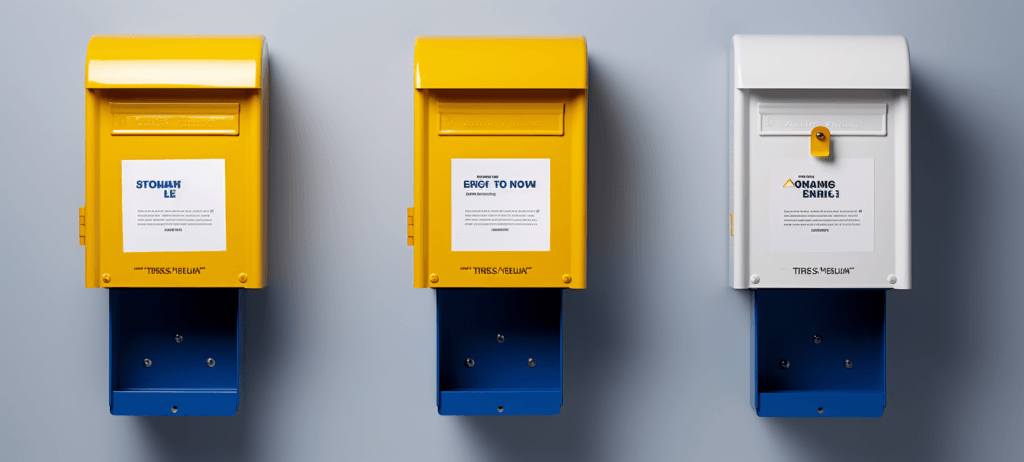-
 9 min. read
9 min. read
-
 Dan Wilhelm
Dan Wilhelm Content Writer
Content Writer
- Dan Wilhelm is a marketer, journalist, and ghostwriter. He studied creative writing at Susquehanna University.
We talk a lot about the future of marketing, but what we might miss in conversations like these is the fact that one of your best marketing tools might already be right under your nose. We’re talking about email marketing. Specifically, how to grow your email list. Few people doubt its power, but fewer still know what it takes to quickly and effectively grow their list of subscribers. Think about it: these aren’t passive observers—they’re current and potential customers. They’re leads. They’re interested parties that could become the lifeblood of your company. If you’re not actively trying to grow your email list, then you’re leaving money on the table. We’ve put together 12 of the most effective ways on how to increase email subscribers.
Let’s get started, shall we?
We foster and form long-term partnerships so that your business has long-term results.
Over 90% of WebFX clients continue partnering with us into year 2 of their campaign.
Hear from Our Happy Customers

12 Tips to grow your email subscriber list
1. Reconsider your signup location(s).
You’ve probably heard all about how important location, location, location is to the business world. So let’s talk about location of the virtual sort. If you have the ear of your web development team, you’ve probably already had conversations about the optimal placement of a variety of website features and elements. One of the worst location-based mistakes that webmasters and marketers make on a regular basis is not thinking hard enough about where you encourage people to sign up for your emails. Email marketing can give you an amazing return on investment—but only if you take it seriously, and only if you make signing up a snap for your visitors. At the same time, it’s important to realize that creating a nuisance for your would-be customers is tantamount to shooting yourself in the foot. If you get too pushy about email signups, you’ll probably notice that opt-ins will slow to a crawl, and you won’t get more email subscribers… but the same will hold true if you’re too timid about it. Of course, making your email opt-in more noticeable is only your first task.
You’ll also want to think about how that call to action is presented. Does it appear on each page of your blog? On every page of your website?
Just on the homepage? You have lots of options. 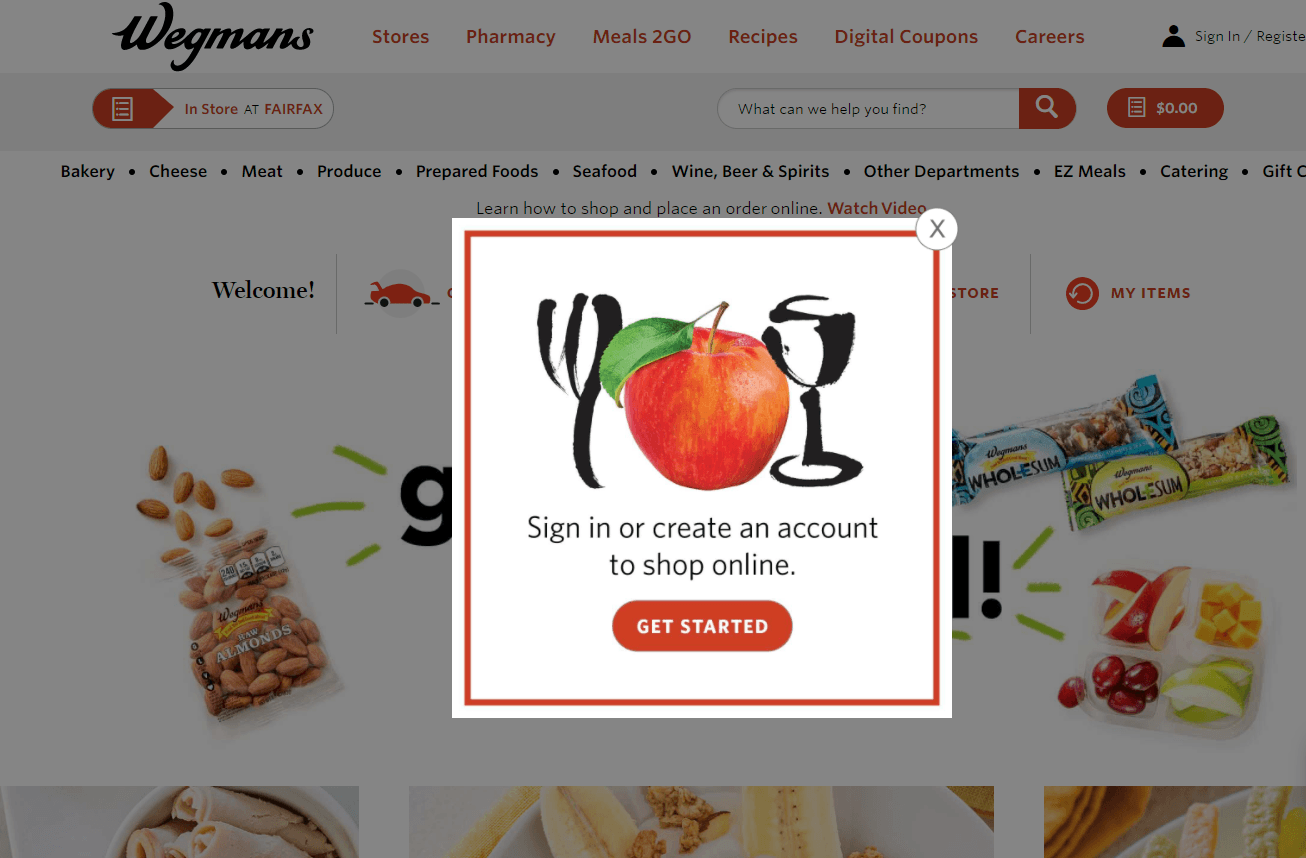 And that might be the key: offering lots of options. On our website, for example, we have multiple locations where you can sign up to receive email updates. We know our readers aren’t going to see every opportunity to sign up, so that’s why we added more than one. In a nutshell: make email opt-in noticeable, accessible, and simple, and don’t hesitate to add multiple locations where visitors can sign up.
And that might be the key: offering lots of options. On our website, for example, we have multiple locations where you can sign up to receive email updates. We know our readers aren’t going to see every opportunity to sign up, so that’s why we added more than one. In a nutshell: make email opt-in noticeable, accessible, and simple, and don’t hesitate to add multiple locations where visitors can sign up.
2. Reevaluate the length of your email signup forms.
Asking for too much information can turn people away from your forms. Seriously, they just want your emails. Do you really need a mailing address or the size of their company? On some occasions, you may need more detailed information about your customers. However, if you just want people to sign up for informational newsletters, you can probably trim down the required form fields to make for an easier experience. 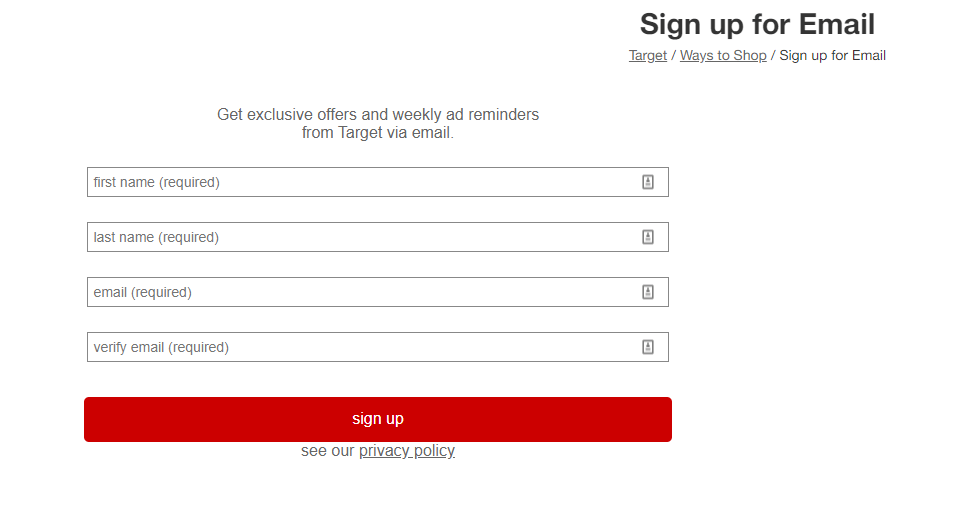 If someone isn’t familiar with your business yet, they might not be comfortable sharing a lot of personal information with you. You also haven’t established your expertise at this point, so they might not feel that it’s worth their time to fill out a detailed form. A name and email may be all that you need to spark a successful customer relationship.
If someone isn’t familiar with your business yet, they might not be comfortable sharing a lot of personal information with you. You also haven’t established your expertise at this point, so they might not feel that it’s worth their time to fill out a detailed form. A name and email may be all that you need to spark a successful customer relationship.
3. Test email signup form designs.
Your form fields might not be the only thing preventing people from giving you their contact information. Your email form design can stand in the way of your quest to grow your email list. Something as simple as changing the color of your form can improve your conversion rate. Your design may not grab people’s attention, or they may find it distracting. It might be too complicated, or too boring. Try testing different versions of your design with one adjustment in each version to figure out what may be standing in the way of you and new email subscribers.
4. Run A/B tests in your email marketing software.
You might not think running tests within your emails can help you figure out how to grow your email list, but it can. If you lose more subscribers than you gain, you won’t see growth in your email list. Understanding what works in your emails can help you keep current subscribers engaged all while you add on to that list with new subscribers. You can test things like:
- Button colors
- Images
- Email subjects
If you notice people react better to one element over another, implement that element in your email marketing content.
5. Tell your subscribers what’s in it for them.
Signing up for an email newsletter is an expression of trust. Customers will want to know that they’ll be getting something of value for the small bit of privacy they’re trading away. 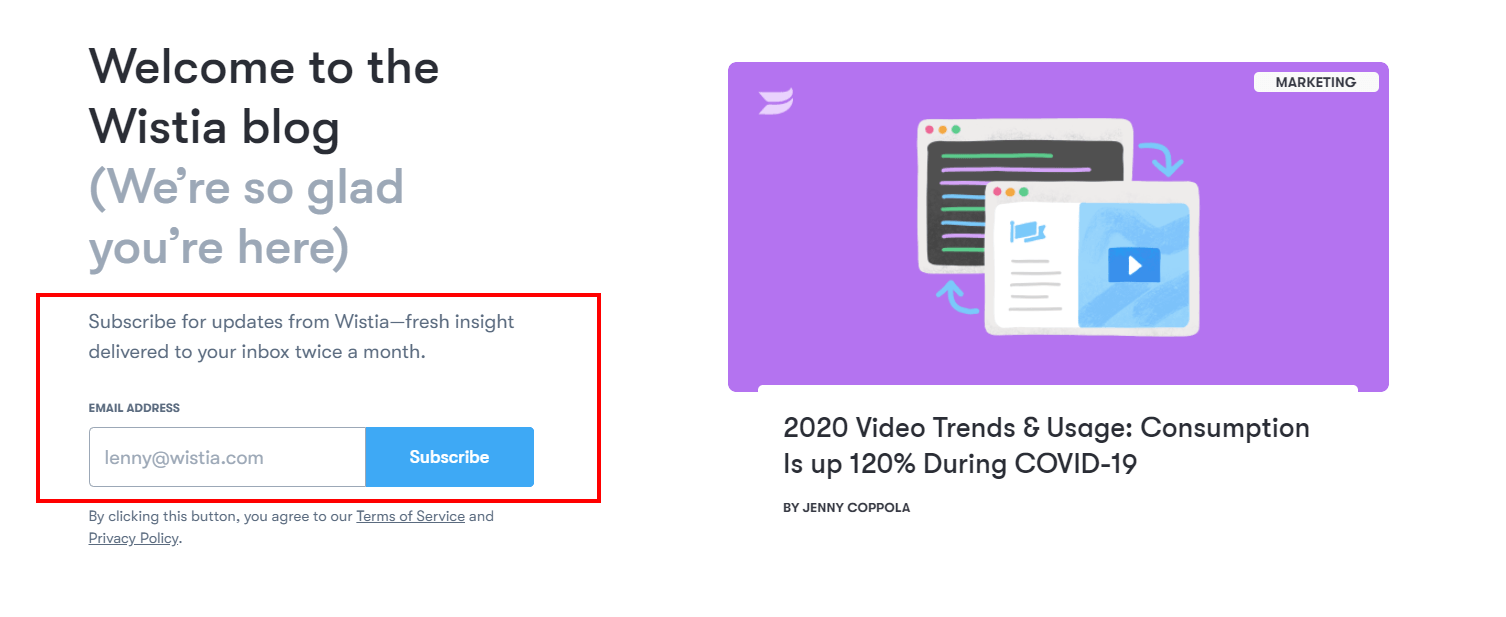 Vague language has no place in email calls to action. So if you’ve been noticing your subscription rates flagging lately, it might have something to do with your sales pitch. You should strive for something similar.
Vague language has no place in email calls to action. So if you’ve been noticing your subscription rates flagging lately, it might have something to do with your sales pitch. You should strive for something similar.
Explain the benefits, and your ultimate intentions, as clearly as you can. And by all means, go one step further and indicate the frequency with which you’ll be sending out new emails—or even offer a choice of frequency for the subscriber.
6. Make them an offer they can’t refuse.
Even more enticing for your customers than promises of long-term benefits is the prospect of getting something right now in exchange for their email address. You might sometimes hear this tactic referred to as “email-gating,” and it involves setting aside a particularly valuable resource just for email subscribers. What kind of content are we talking about? It could be anything—an eBook, a whitepaper, a how-to-guide—you name it. Whatever it is, it needs to provide real-world value that your customers won’t be able to turn down. You could give this content away for free, but why not make a small request in exchange for a valuable resource?
7. Encourage people to share your emails.
If people receive your emails, they can share them, too. Add buttons that make it easy for people to share what you’ve sent them with their friends. Whether you want people to share it on Facebook, Instagram, Twitter, or Pinterest, let people know it’s possible. Use your existing base of email subscribers to get more email subscribers.
8. Ask for emails in person.
If you have a store or interact with customers in person, tell them about your email marketing. Give people the ability to sign up for emails when they make a purchase, or simply tell them where they can leave their emails. If you have marketing materials like business cards, banners, or anything else along those lines, consider adding a bit of information about signing up for emails. Don’t be afraid to promote your email marketing efforts in person.
9. Ask for emails on social media.
Don’t solely rely on other people to share your email content on social media. Be vocal about your emails on your social channels. On Facebook, for example, you can add a call-to-action button that links to your email signup form. You can also promote your newsletter through your social posts. Use social media as an extension of your in-person email promotion strategy to reach even more people. In time, you’ll start seeing your email marketing promotion efforts pay off.
10. Send responsive emails.
Again, taking every step possible to prevent people from unsubscribing can help you grow your email list. Having to pinch and zoom, or not being able to view the entire email, can be incredibly frustrating for someone who wants to read your content. If your emails don’t work on every device, especially mobile devices, you’ll lose out on an engaged audience. Responsive emails will adapt to a variety of screens so you can be confident you’re not isolating any subscribers. You’ll create a good user experience, and people can properly enjoy the content that you’ve spent a lot of time creating.
11. Make your emails easy to read.
Sending subscribers giant blocks of text is great for pushing them away. Like anything you create, people want it to be snackable, or easy to read. 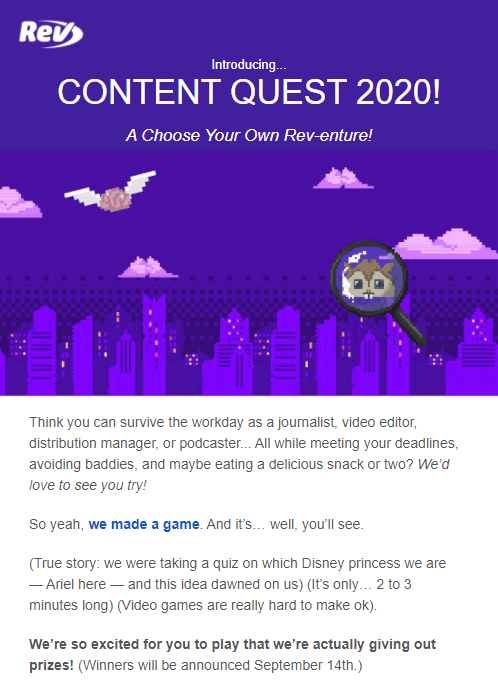 People see a lot of emails in a day, and if yours is long and intimidating, they’ll most likely move on to someone else’s. The solution? Break up your text. Stick to short paragraphs.
People see a lot of emails in a day, and if yours is long and intimidating, they’ll most likely move on to someone else’s. The solution? Break up your text. Stick to short paragraphs.
Include images that help demonstrate your points. Use custom graphics to split up your newsletter. Whichever tactic you choose, just keep in mind that people have a limited amount of time to read a lot of emails.
12. Analyze your email performance.
You won’t know if your efforts to increase email subscribers are working if you aren’t tracking your email data. Metrics like subscribe rate, open rate, click-through rate, and conversion rate can help you understand if your email marketing campaign is driving results. Look at where you’re succeeding and where you need improvements. After you dive into your data, implement changes to see if you can make a difference. This ties back to testing different elements of your email marketing, like your form designs, email formats, and more. Let the numbers be your guide. For more information on how to start your email marketing campaigns, watch this video below:
Ready to start growing your email list?
We hope you’ve enjoyed this look at 12 of our favorite ways to get more email subscribers — without buying an email list. If you’d like to speak with someone who can tell you about what email marketing can do for you, we’re standing by to help start the conversation. Give us a call at 888-601-5359 or fill out the contact form on our website to learn more about how we can help you grow your business with email marketing.
-
 Dan Wilhelm is a marketer, journalist, and ghostwriter. He studied creative writing at Susquehanna University.
Dan Wilhelm is a marketer, journalist, and ghostwriter. He studied creative writing at Susquehanna University. -

WebFX is a full-service marketing agency with 1,100+ client reviews and a 4.9-star rating on Clutch! Find out how our expert team and revenue-accelerating tech can drive results for you! Learn more
Try our free Marketing Calculator
Craft a tailored online marketing strategy! Utilize our free Internet marketing calculator for a custom plan based on your location, reach, timeframe, and budget.
Plan Your Marketing Budget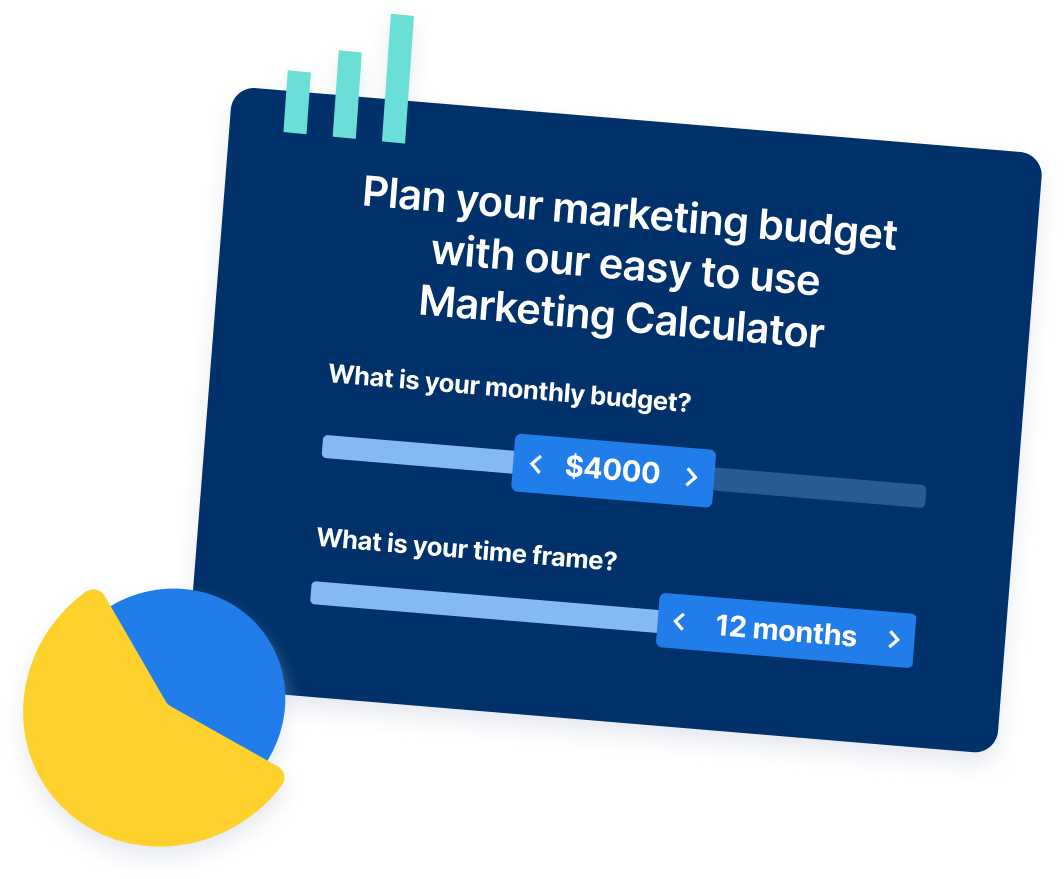
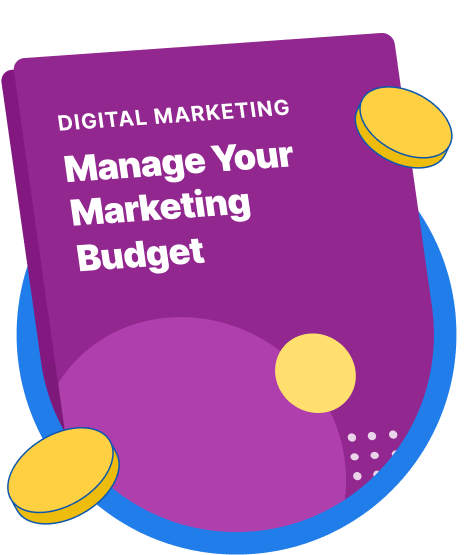
Maximize Your Marketing ROI
Claim your free eBook packed with proven strategies to boost your marketing efforts.
Get the GuideTry our free Marketing Calculator
Craft a tailored online marketing strategy! Utilize our free Internet marketing calculator for a custom plan based on your location, reach, timeframe, and budget.
Plan Your Marketing Budget



